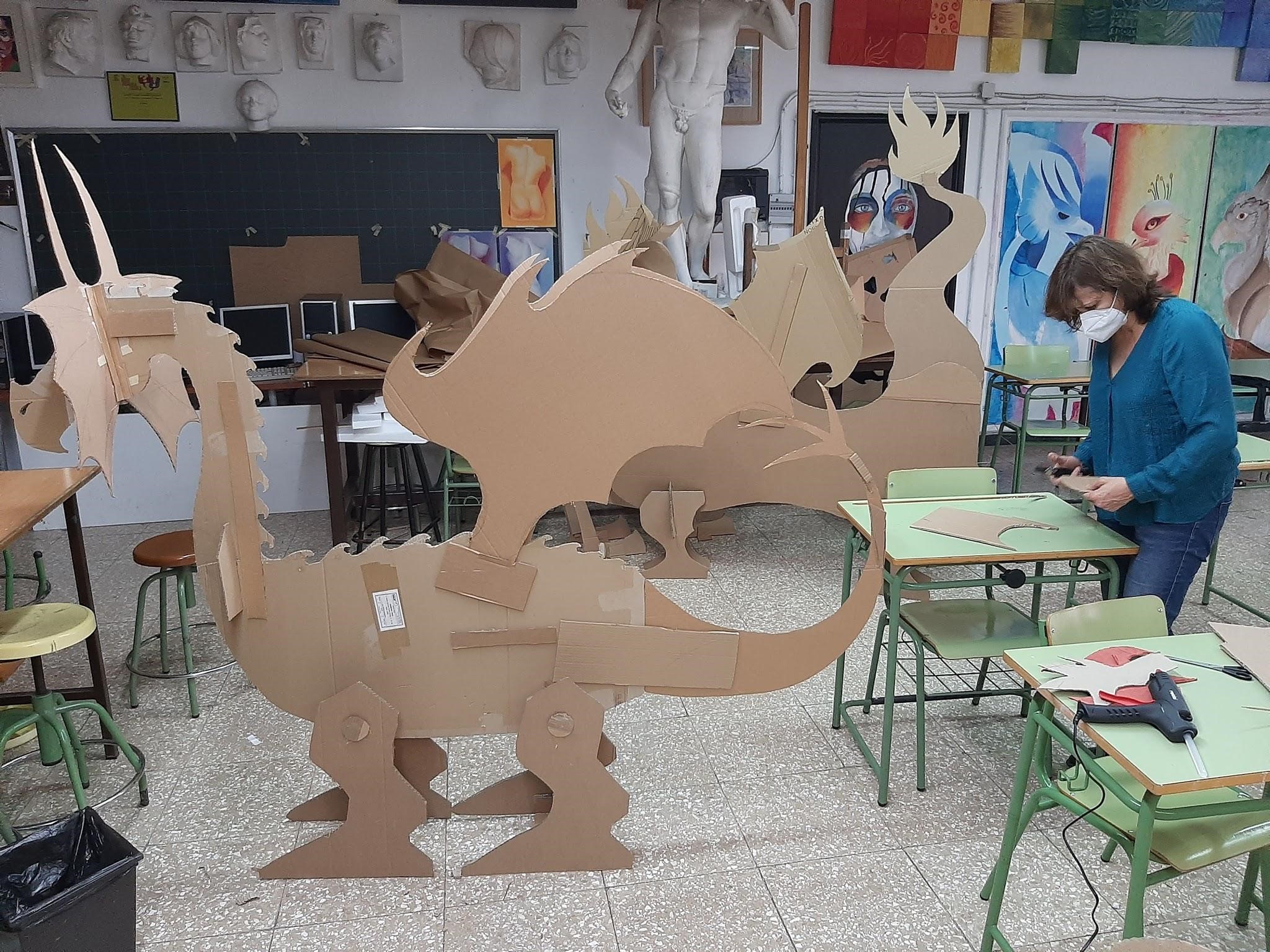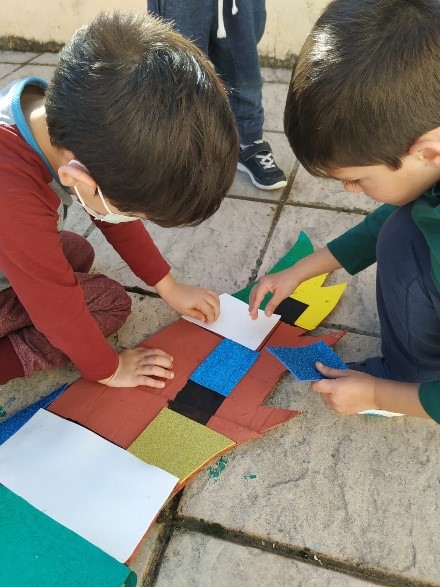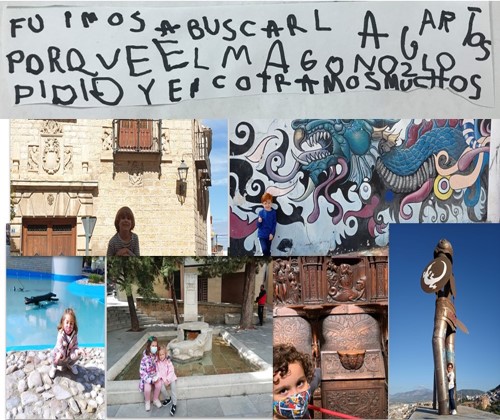An Open Schooling approach in times of pandemic restrictions in schools and communities
by Ana Maria Abril Gallego, Marta Romero Ariza & Sabine Mickler
How can Open Schooling projects be implemented when, due to restrictions imposed by the pandemic, school classes are not supposed to have contact with outsiders either inside or outside the school? Together with teachers from early childhood and primary school education, the MOST project partners in Spain (University de Jaén) have developed a special concept to offer children an open schooling experience despite the difficult pandemic situation.


The starting point for the Open Schooling projects was really popular legend named as “Magdalena`s lizard”. The legend says that a long time ago, Jaén was a prosperous city; however, it was threatened by a beast that lived in its spring waters. This horrible beast, which the local people called “The Lizard”, used to eat young ladies that peacefully approached the Lizard’s spring to fill the amphoras with water each afternoon. The Lizard was finally defeated by a clever and valiant knight, that used a sheepskin filled with gunpowder to feed the Lizard. Afterwards, the knight lit “The Lizard” when it was sleeping and made it burst into thousands of pieces that re-shape the city and gave rise to the Dracon constellation in the sky. After that, from a bird’s eye view, Jaen exhibits a particular shape that resembles The Lizard.
After revisiting the legend, students were challenged to inquiry about the nature of The Lizard and the implications of The Lizard’s death: Was it a reptile or an amphibian? Is it true that Jaen’s shape resembles The Lizard? What do you know of the Dragon constellation?
Students worked in small groups (bubble groups) in order to find responses to the different initial questions. They collected information about the legend, studied the main characteristics of the different animals and how to distinguish and classify them, compared amphibians with reptiles, worked with the city map and built their own representations of The Lizard in different scales, using recycled materials in collaboration with The Art School of Jaén. In order to share the outcomes of the project, a large exhibition throughout the city was organised in collaboration with the City Hall and Provincial Council.
During this project phase, the students were able to meaningfully acquire and apply key knowledge and skills of high value for science and mathematics learning, e. g. Identifying and classifying animals on the basis of their key features, working with scales and models, making estimations about distance and time, developing inquiry and scientific skills related to the ability of raising questions, formulating hypothesis, observing, making investigations and communicating results. Furthermore, they appreciated the value of scientific processes to build reliable knowledge about the (local) natural and cultural heritage.

Children working on a statue of a lizard using recyced materials

All images: University of Jaén
As class activities were not allowed outside school at that time due to the restrictions, the families of the students were involved: They visited the exhibition in the city together and participated in the work of the individual small groups. To involve more community members in the projects but also to enable communication between the student working groups of different schools and education centers, Video conferencing was used. For example, some groups worked together with the School of Art of Jaén. In various co-creation activities, they designed lizards, studied their shapes, colours and characteristics. Finally, art students made sketches that the students used to create sculptures from recycled material in the classroom. Other external stakeholders included representatives of the City Hall and Provincial Council, renowned visual artists, families, teachers and researchers from the University of Jaén and the official professional centre for teachers, etc.
In total, around 300 students were highly engaged and motivated in a variety of different projects. In particular, authentic and interdisciplinary learning was promoted, with a focus on understanding natural and cultural heritage. Students have made meaningful connections between the school and the surrounding community and have made a real contribution to the world around them. Teachers from different grade levels and citizens from different backgrounds worked together on a meaningful project that went beyond the boundaries of the school. They had the opportunity to experience the value of building learning communities and interdisciplinary collaboration between different stakeholders.
